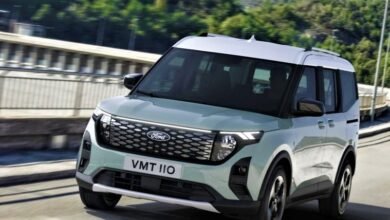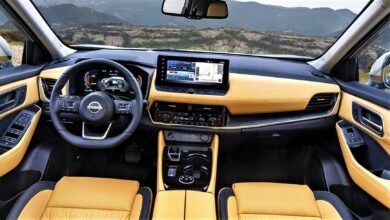
Types of car engines
The basic concept behind the way a car engine works is to produce enough power to move the car. It seems a rather simple process to us at Howie’s Car Corral. However, most drivers cannot distinguish between the different types of car engines or really understand how they work.
Today we’ll look at the different types of liquid fuel engines and show how to make a car, truck, or SUV – or any other type of vehicle that moves.
What is a car engine and how does it work?
Before the use of hybrid and electric car engines, a car engine could easily be described as a machine that facilitates the internal combustion of energy-producing fluids such as diesel and gasoline. However, since the introduction of hybrid and electric cars, explaining how a modern car engine works requires more information and knowledge.
In 2021, modern car engines can be more easily understood simply by dividing them into their three basic categories, which include:
- Internal combustion engines
- Hybrid engine (internal combustion engine + electric motor)
- Electrical engine
In this article, we focus on how a conventional internal combustion engine works and review the most common types of combustion engines used in vehicles today.
What is an internal combustion engine?
History
In 1876, the first internal combustion engine designed for commercial use was invented. This became the primary design for most standard gasoline engines in vehicles and is still largely used to this day.
Modern internal combustion engines make use of a four-stroke principle known as the Otto cycle, which is named after its primary inventor, Niklaus Otto. This cycle refers to the process in which the energy-producing fluid is converted into motion.
How does the internal combustion engine work?
To understand the steps of how a four-stroke internal combustion engine works, the following expression is often used: Suck, Squeeze, Bang, Blow.
This phrase includes the four basic actions a four-stroke engine must perform to convert liquid fuel into usable energy. The energy produced by this cycle is what ultimately propels the car forward.
suck, squeeze, bang, blow
How all the different types of car engines that use a four-stroke engine work can be described in the following four steps.
Step 1: suck
Primary: The engine absorbs a mixture of fuel and air.
The piston starts the process by descending and drawing air into the cylinder through the intake valves. The fuel is then transferred to a cylinder containing the piston. This is referred to as a stroke.
Step 2: Compress
Basic: The engine compresses or compresses the air and fuel in the cylinder.
Closing the intake valve allows the piston to move upward, thereby compressing the air and fuel inside the cylinder.
Step 3: Pop
Primary: The compressed fuel and gas are exploded using a catalyst.
The spark plug ignites the compressed fuel/air mixture to cause a small explosion. The process is repeated constantly when the engine is running. The energy from these tiny explosions is directed to the wheels of the car.
Step 4: Blowing
Essential: exhaust exhaust.
Waste fumes from the explosion are expelled in each cylinder through the vehicle’s exhaust system.
Regular vehicle maintenance is very important so that the vehicle’s engine can perform well and last for as long as possible.
Various configurations of the internal combustion engine
In modern engines, the cylinders are arranged in different ways and configurations to give different results. Your vehicle’s engine will have an inline cylinder, V or rotary cylinder configuration. Each type of configuration has its benefits and drawbacks which we will discuss below.
V Style . engines
This was the most common automobile engine on the market and is still heavily used by auto manufacturers today.
It features two sets of cylinders positioned on the crankshaft at an angle that forms a “V” shape. These configurations come in three variants: V6, V8 and V12. These engines have a set of 3, 4 or 6 cylinders on either side.
Pros and cons of V engines:
- V-type engines usually feature high-quality displacement and a solid design.
- Its maintenance is expensive and complicated for people to understand.
- Compact and allows more space in the cabin.
- Ideal for large family vehicles, trucks and other cars that require more power and towing capacity.
Examples of common vehicles in our inventory division with V style engines include:
- Ford Expedition
- Honda Ridgeline
- Ford F-150
- May be odyssey
inline engines
The inline engine configuration features all cylinders in a straight line. The pistons rotate 360 degrees in such engines. The first mass-produced car, Ford’s Model T, was based on a 4-cylinder inline engine from 1908 to 1927.
Modern inline engines are more compact, more fuel efficient and perform better than the original version of the Model T. Vehicles with 3- or 4-cylinder engines are more likely to have inline engines. Some examples of good quality used cars with inline engines are:
- Mitsubishi Mirage
- Honda Accord
- Buick Regal
- Chevrolet Cruze
Pros and cons of the inline engine
- These motors are compact and lightweight.
- It’s easy to fix.
- They are rather sensitive engines.
When shopping for a used, compact, or fuel-efficient sedan, you should expect to find one with a four-cylinder inboard engine. Its compact size, lightweight materials and good fuel efficiency make it ideal for powering smaller passenger cars.
flat motors
These engines share similar characteristics to V style engines and are often referred to as boxer engines. The main difference is that the cylinders are placed at an angle of 180 degrees from each other. Flat engines provide a low center of mass and are mostly seen by Victoria car buyers in motorcycles and high-end luxury vehicles.
Motorcycles, such as those made by BMW in 2021, are based largely on flat, two-cylinder engines.
High performance flat-engine vehicles include the JaguarXK6,
Pros and cons of flatbed motors
- Flat-engine vehicles are well balanced and easy to handle.
- Engines can be huge and somewhat complex to understand.
rotary motors
This engine configuration is common in aircraft and very few cars. A rotary engine has a single crankshaft positioned at the center of the pistons which move in a star pattern instead of the usual up and down motion.
Pros and cons of rotary motors
- These drivers are easy to understand.
- They are durable engines.
- It is very difficult to find a skilled mechanic in case of failure.
With this brief introduction to engines, you should find understanding your vehicle fairly easy. For further assistance in understanding your vehicle’s engine or to ensure it is in top operating condition,



